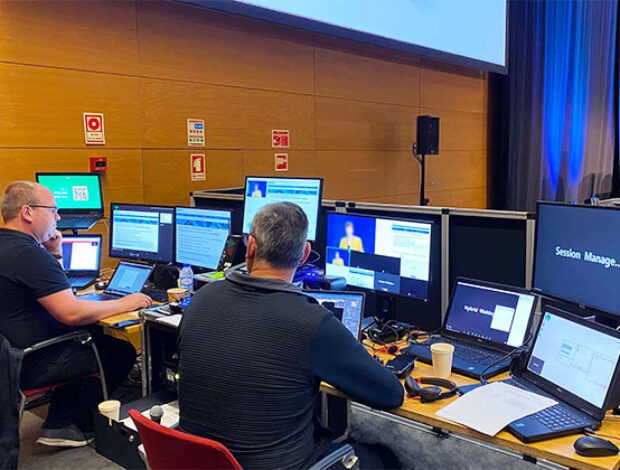
From physical to virtual to hybrid: COVR causes two transformations
17/03/2022 - 2 min readThe business of COVR, responsible for supporting international medical congresses, underwent a transformation last year from physical to fully virtual congresses. Now there is another crucial switching moment: from virtual congresses to a hybrid setup. We spoke with Tim Sleebus, director at COVR and audiovisual partner Michael Van Rooy of Techni-Congress.
From audiovisual setup to laptop
Corona forced us all to stay in our ‘bubble’. Not easy, to say the least, when your business is based on international medical conferences. That was the case at COVR, which has been working together for years with Techni-congress, an expert in audiovisual setups. Fortunately, the partners did not hold back and worked hard to create a completely virtual platform to enable medical organizations to connect with each other online. A good solution, but one with a great impact
“Because of the virtual conferences, the audiovisual part suddenly became an ‘IT thing’. There was no need for sound amplification in large halls, no projections on screens … Everything passed through small screens and headsets. Of course, we had less control over the image and audio quality. Not every speaker or moderator has a good webcam, microphone or internet connection. And no internet means no congress. So on the audiovisual side, it quickly became limited to a few laptops” says Michael Van Rooy.
New switching moment
However, now that the corona measures are gradually being abolished and congresses are once again allowed to take place physically, a solution has been chosen: hybrid congresses. Visitors and speakers follow the sessions both from home and on location. Sound amplification and image projection are again necessary, and this with additional equipment and technicians who ensure that not only the participants in the hall but also the people on the virtual platform experience the ideal experience. “Eventually you get the effect of visitors sitting in the hall listening to a speaker giving his session from a bar,” says Tim Sleebus.
Best of both worlds
That hybrid conferences are here to stay, is something Tim Sleebus and Michael Van Rooy agree on. “By keeping both options open, you don’t exclude anyone. Everyone can participate in some way. And people who travel to the congress are also extra committed.
So on a technical level, we can say that the hybrid setup no longer has any limitations today. The challenge now lies primarily in bringing together the two ‘worlds’ and, of course, in getting policy decisions across. What is certain is that the business model will change. We, as a support company, will have to try to predict that future and respond to it in terms of technology,” says Tim Sleebus.






